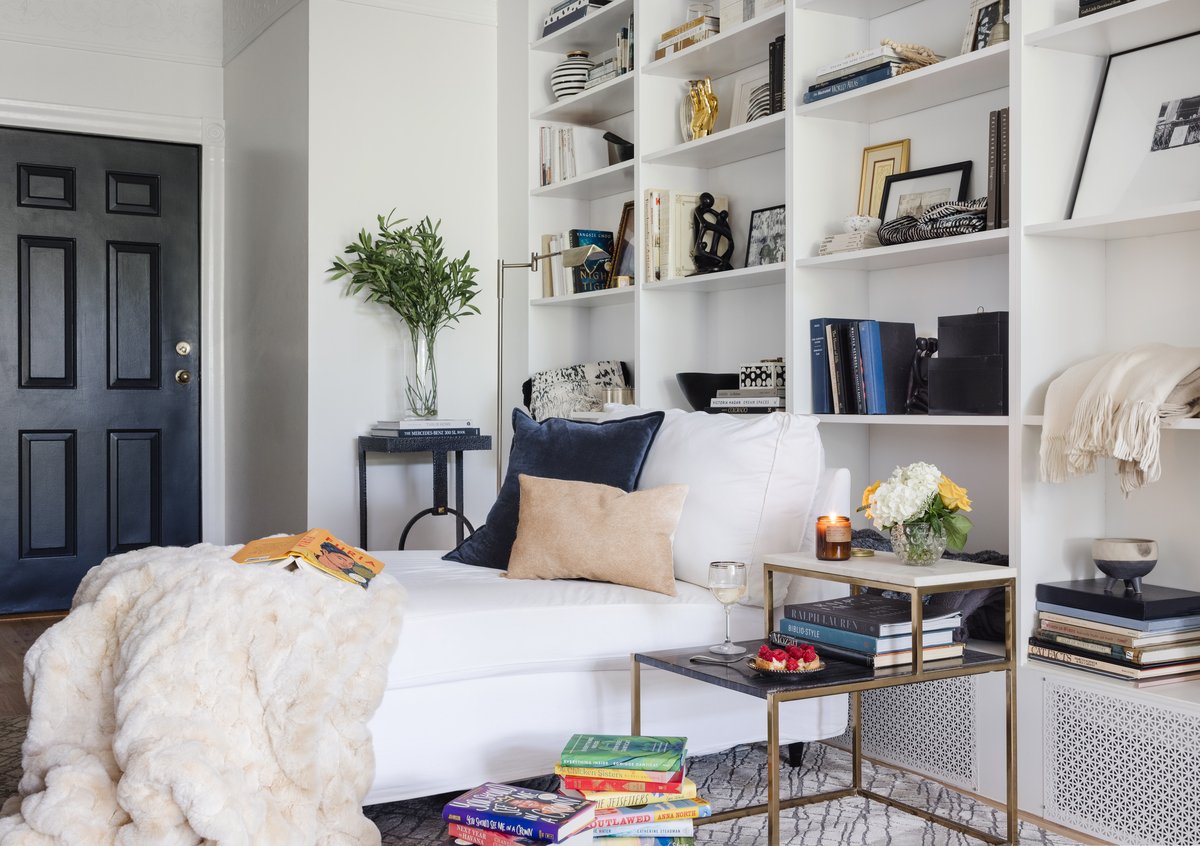When done right, your average bookcase can become so much more than just utilitarian storage for books. In fact, careful curation (think: intentional arrangement by color, texture, and size) can transform your bookshelf into striking decor or even thought-provoking art. Whether you’re looking for an eye-catching monochromatic display or an authentic library vibe, we have the designer-approved tips you need to organize your bookcase to “shelfie” perfection.
And if you’re really looking to transform your bookcase into an opportunity for self care (or perhaps better said, shelf care), look no further than our latest partnership with Reese’s Book Club to design your dream Reading Room. Complete with literary inspiration, furniture best sellers (including our must have cozy reading chairs), and plenty of designer tips to help you discover more joy in home through reading.
But back to our tried-and-true ideas on how to organize a bookshelf…
Remove the Jackets
First things first — removing the jackets from hardcover books is a must. This simple task will reveal the solid fabric exteriors, which are much more attractive and will help you determine which color-focused organization method to pursue.

Taste the Rainbow
A current trend is to organize your bookshelf in rainbow order. If you’re a fan of the joyful ROYGBIV aesthetic, this is a great way to add a pop of color to an otherwise neutral room or accentuate an already vivid color palette.
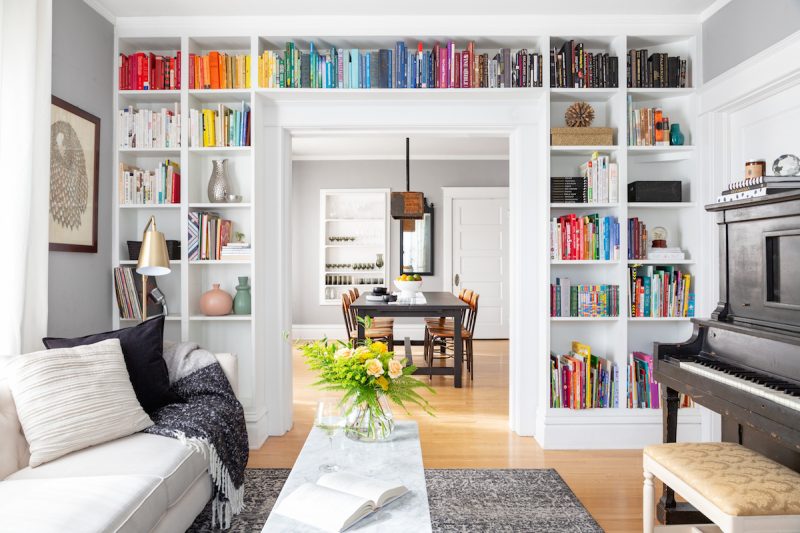
Craft Color Blocks
Color blocking — which is basically creating distinct sections of books by hue — makes for a bold and vibrant bookcase. Stagger color-coded stacks on various shelves to build an interesting pattern, as opposed to placing all reds on one shelf and all yellows on another.
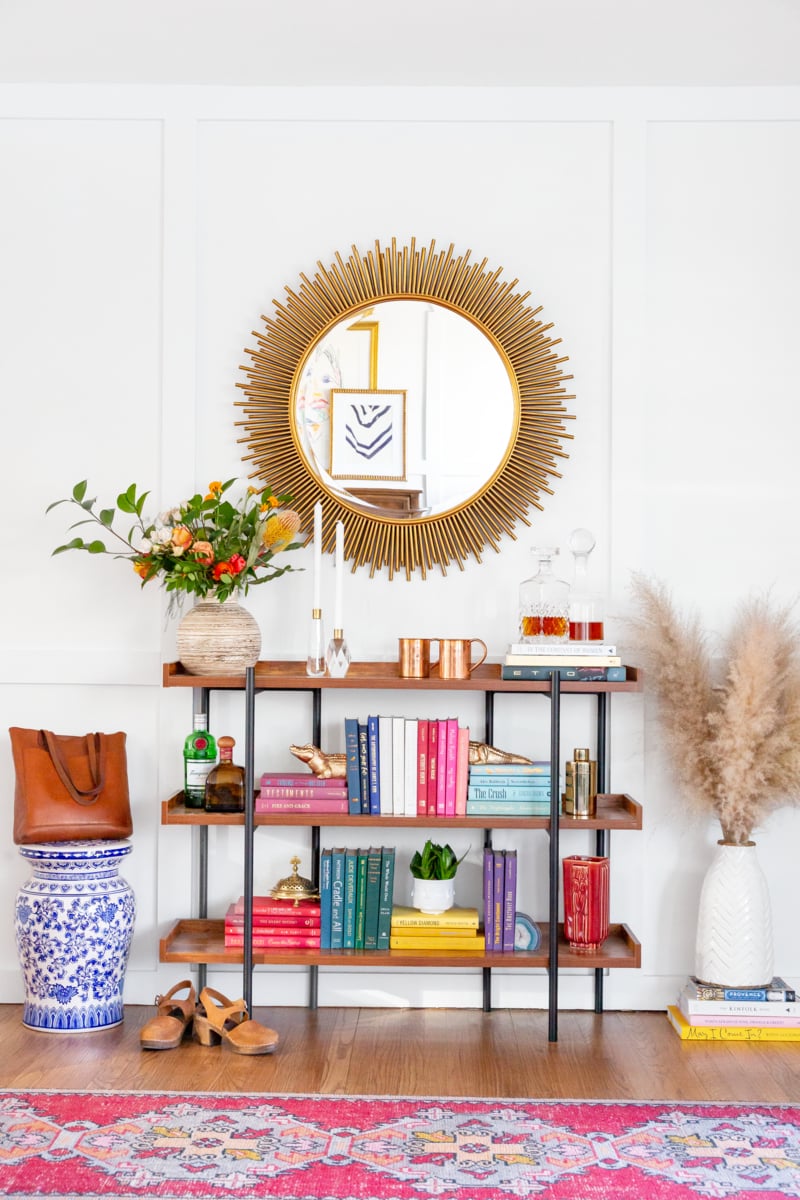
Go Ombré
To produce an ombré effect, group books in various shades of the same color and arrange them from light to medium to dark. The gradient look is a total showstopper and yet feels subtle enough to work with almost any design style.

Commit to Monochromatic
If you’re willing to sacrifice content for beauty, select a single color for a monochromatic display and stow away the rest of your novel collection elsewhere. You have to be ruthless if your favorite book doesn’t make the cut, but the visual impact will be worth it — we promise.
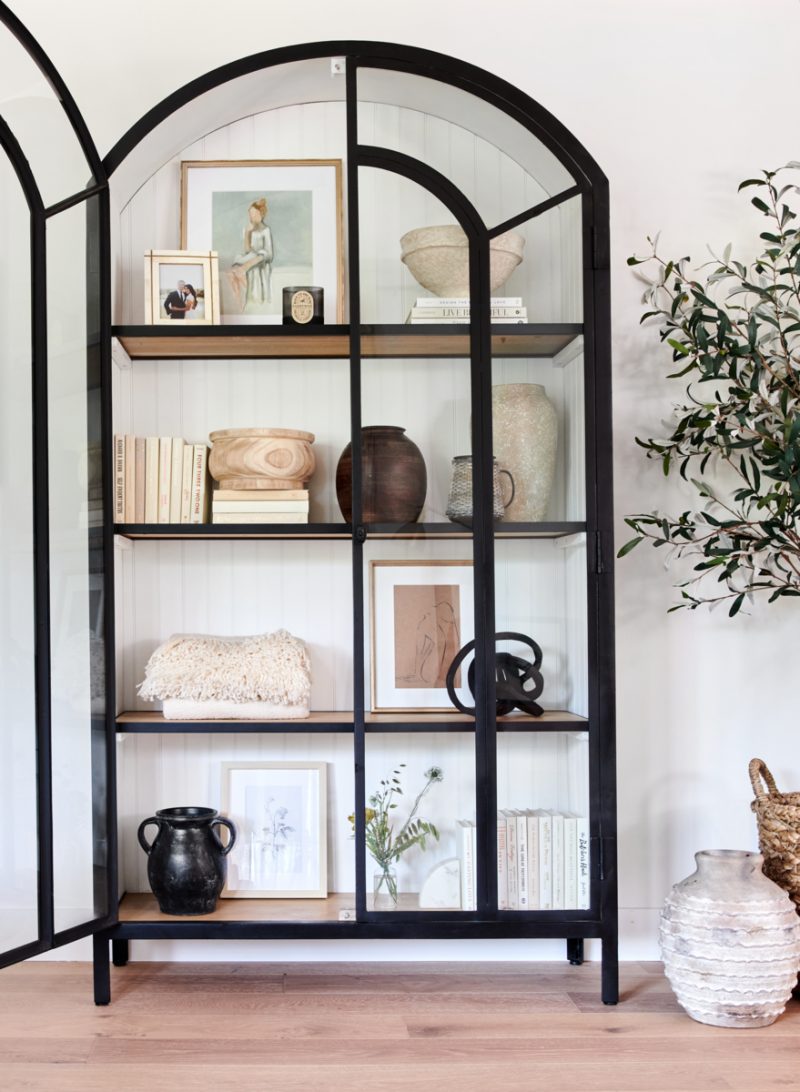
Match Your Color Scheme
Sticking to just one hue may be an unachievable goal, but limiting your shelf to books that match your existing color palette is a much easier and equally worthy strategy. If your room employs a neutral color scheme, you can only exhibit books in that family.
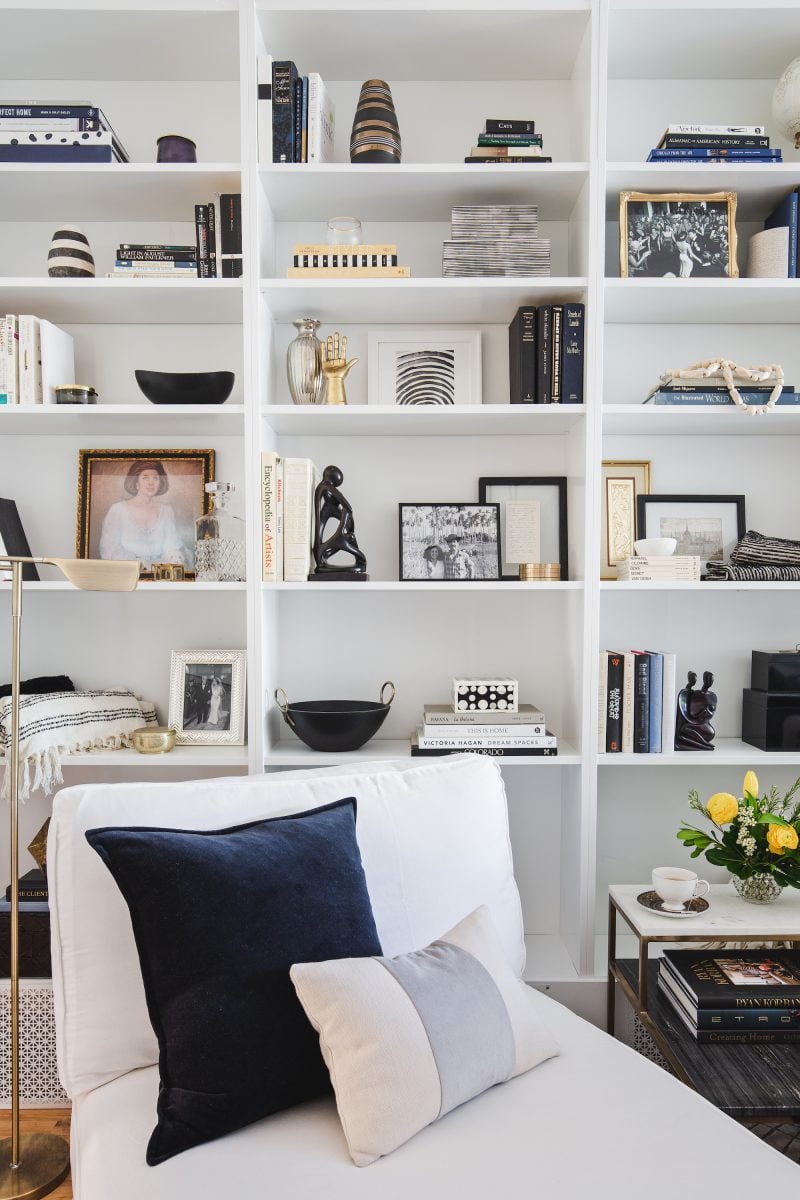
Spine-In Controversy
This is a hotly contested one amongst our designers, and book lovers alike (resulting in Team Spine vs Team Pages). If you’re into textural variety, place your books with the spine facing in and the pages facing out. While guests won’t be able to peruse your chosen titles (which might be a good thing), the unexpected exposed paper is bound to draw attention.
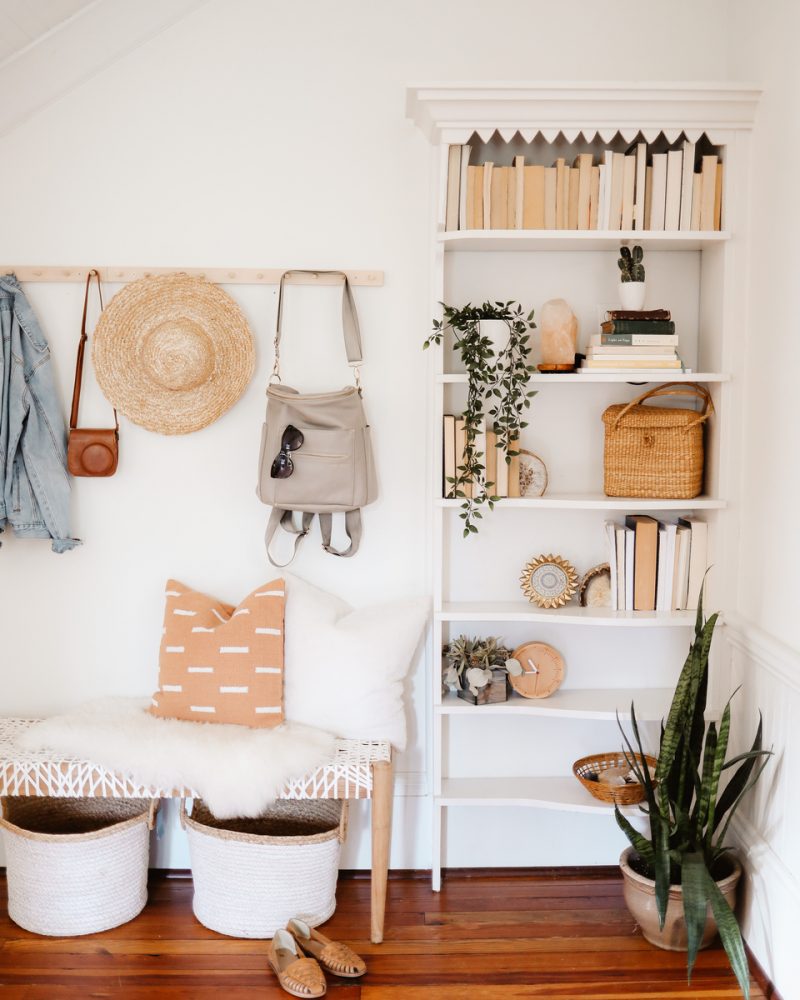
Mix Orientations
Arrange clusters of books in both horizontal and vertical orientations for added dimension. This simple-yet-transformative trick can be combined with any of the color-focused organization options, as well as organizational structures (series, genre, or size).

Play with Height
For visual intrigue, experiment with the size of your books. You can create an innately pleasing cascade by organizing your books by height, from tallest to shortest. Alternatively, varying heights from book to book provides depth.
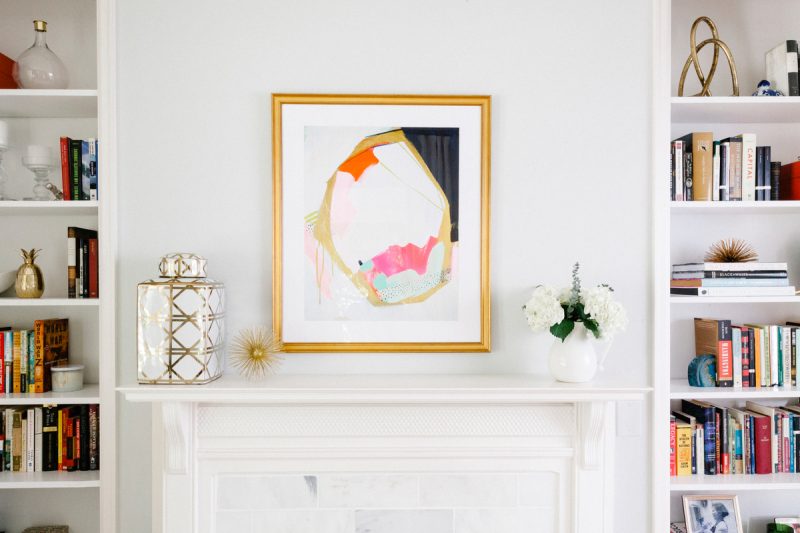
Simulate Your Own Library
For an authentic library feel, organize books alphabetically. You can sort by title, by genre, by subject matter, by author, by time period, or using a combination of these factors. This arrangement will make it easy for you to find a book when you need it.
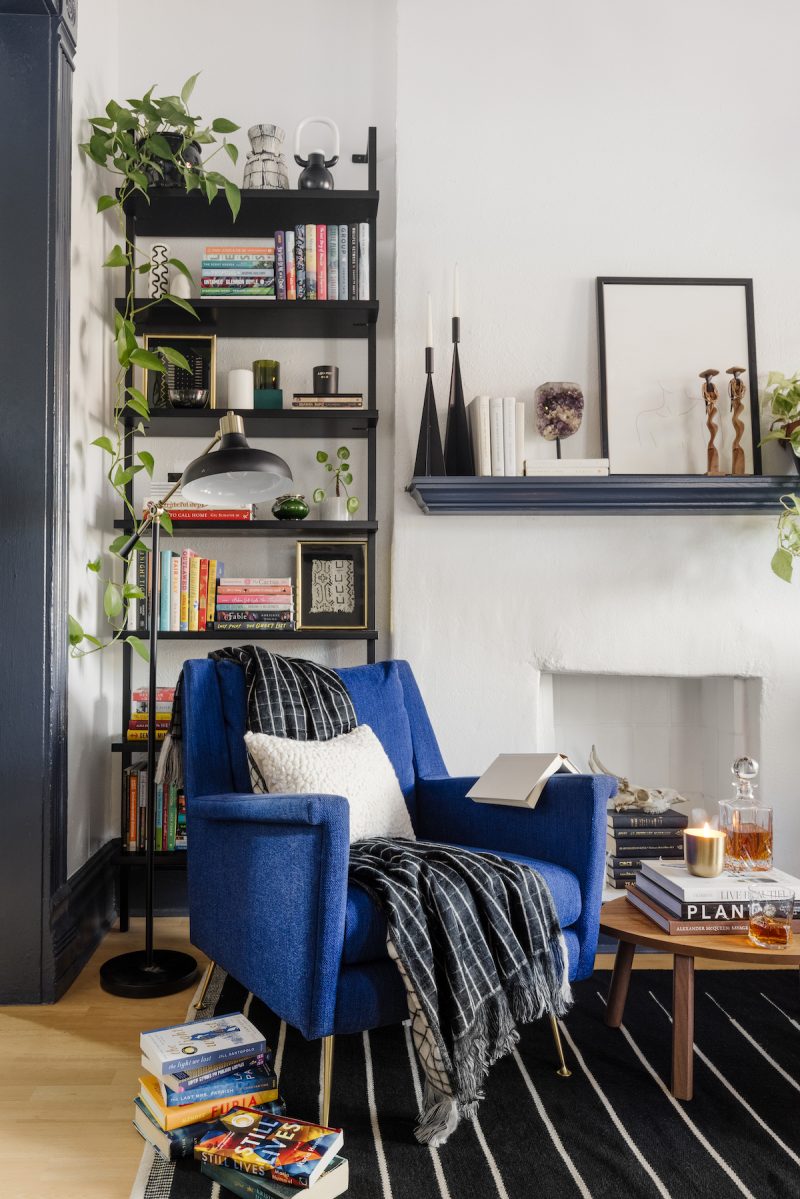
Incorporate Layers
Finally, include little decor accents for a layered look. Weave in your favorite candles, small potted plants, sculptural tchotchkes, framed photographs, and decorative boxes where you stash little odds and ends.
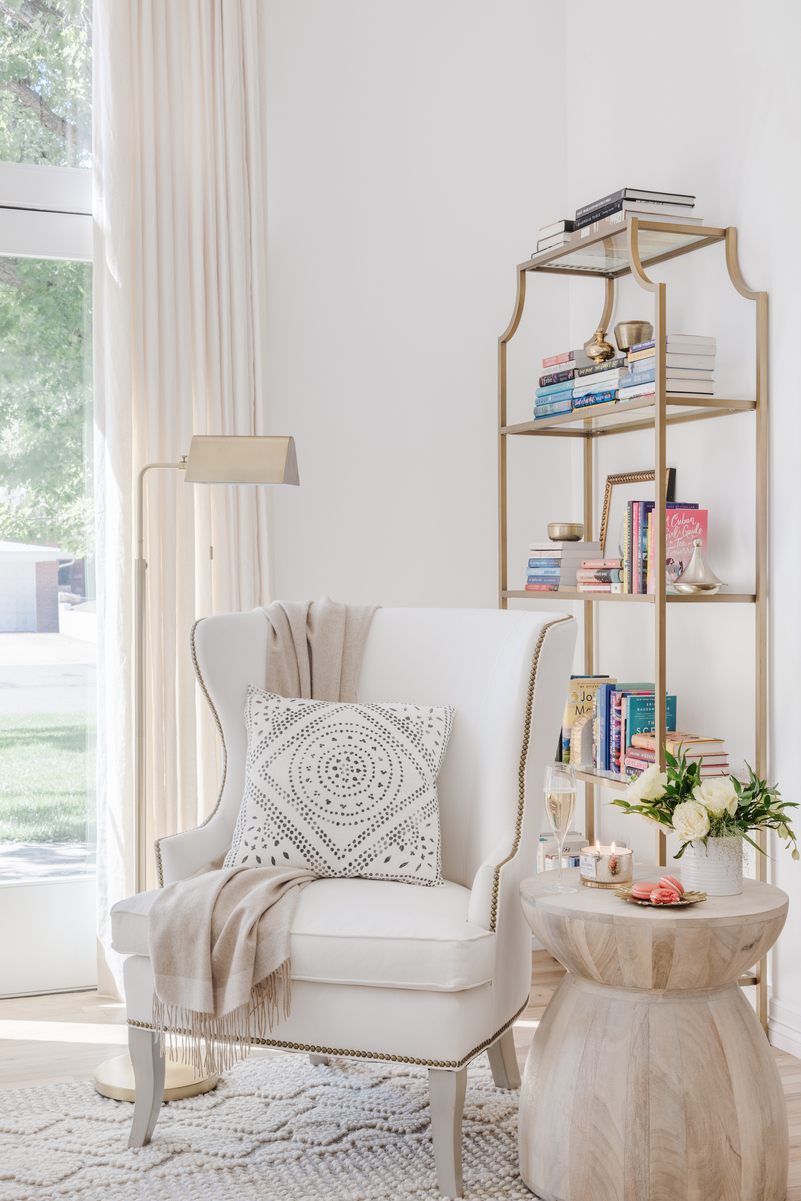
From the big picture layout and furniture, to the little details that bring to life a space, our designers are with you all the way. Take our style quiz to discover the perfect design who just “gets you.”

